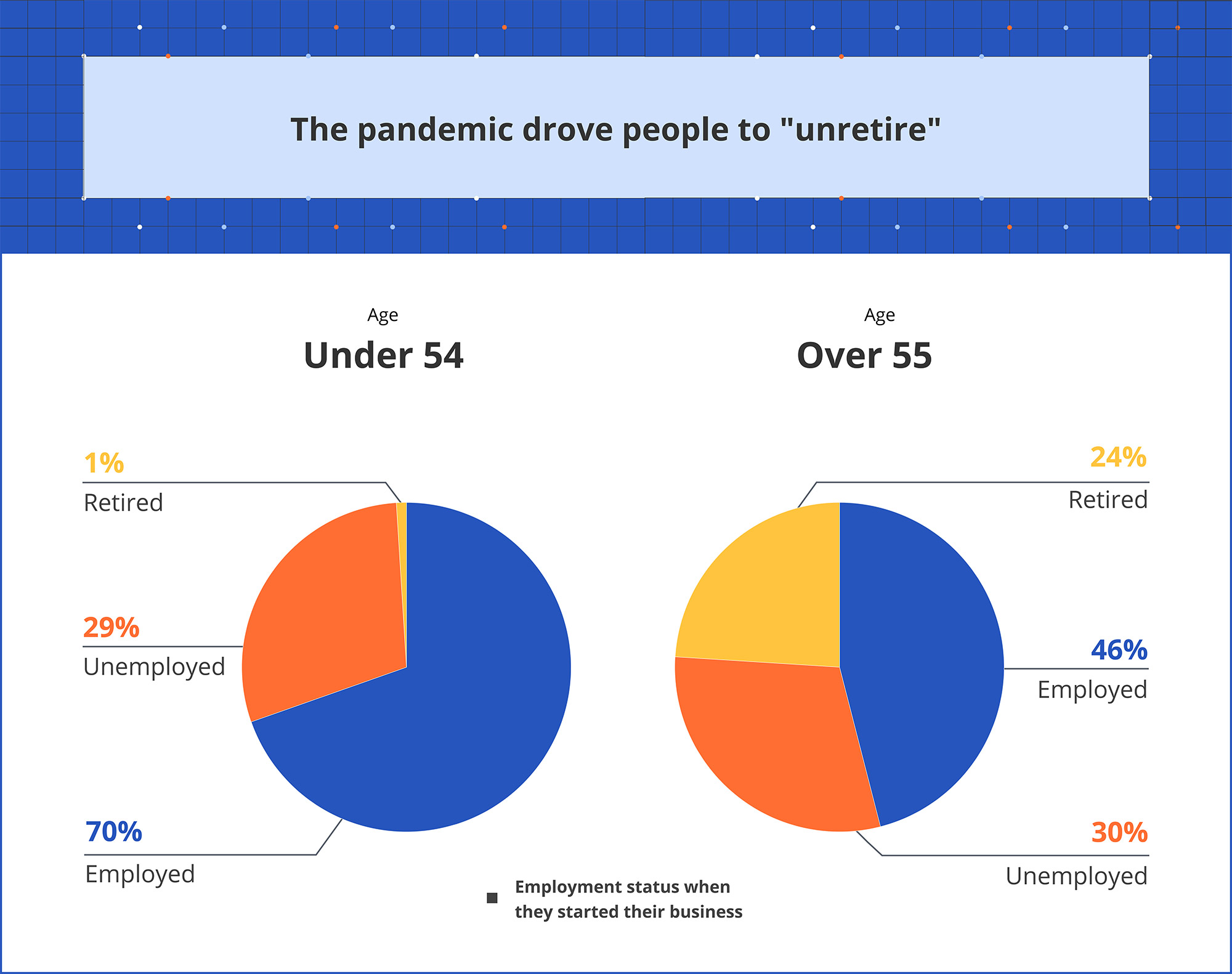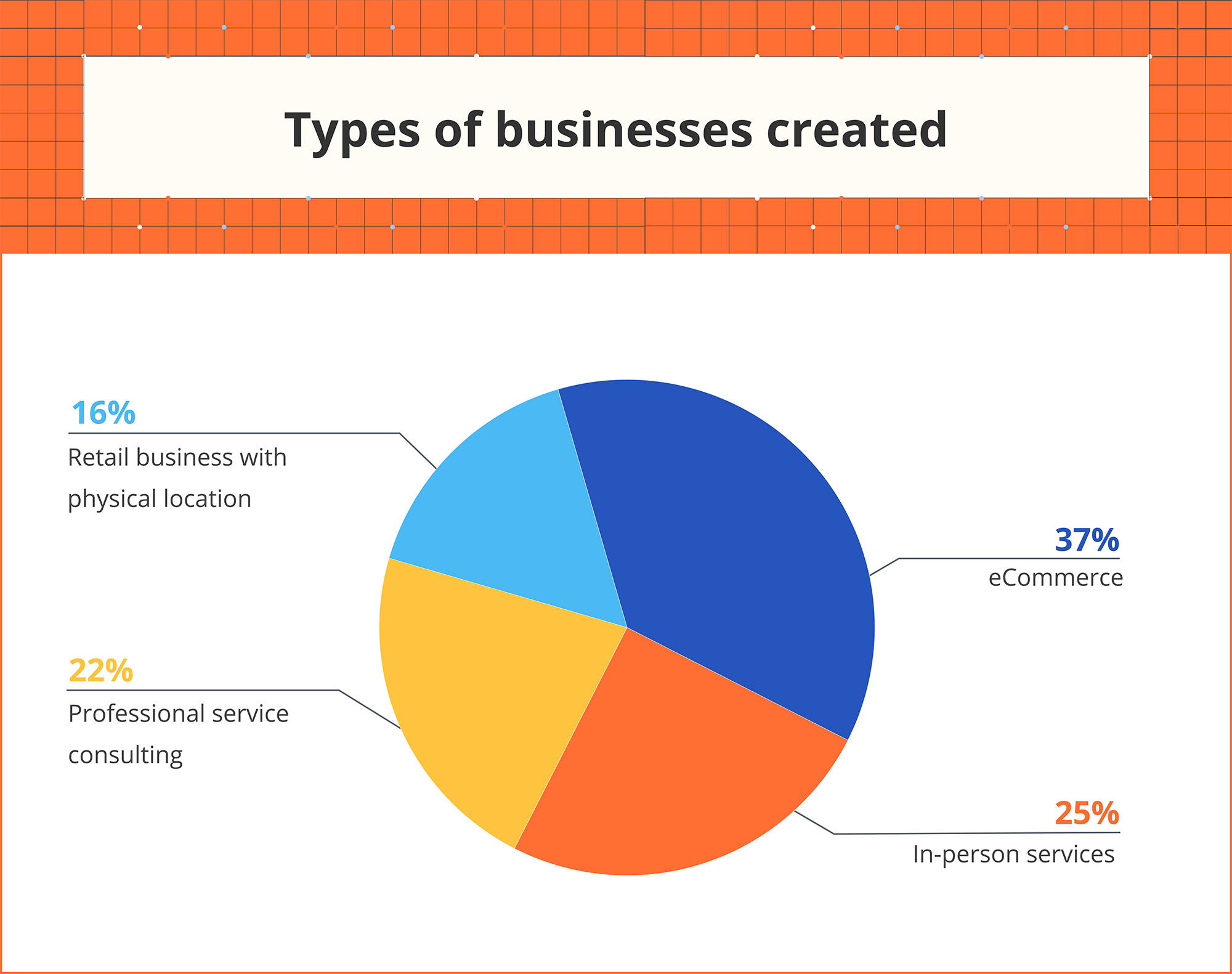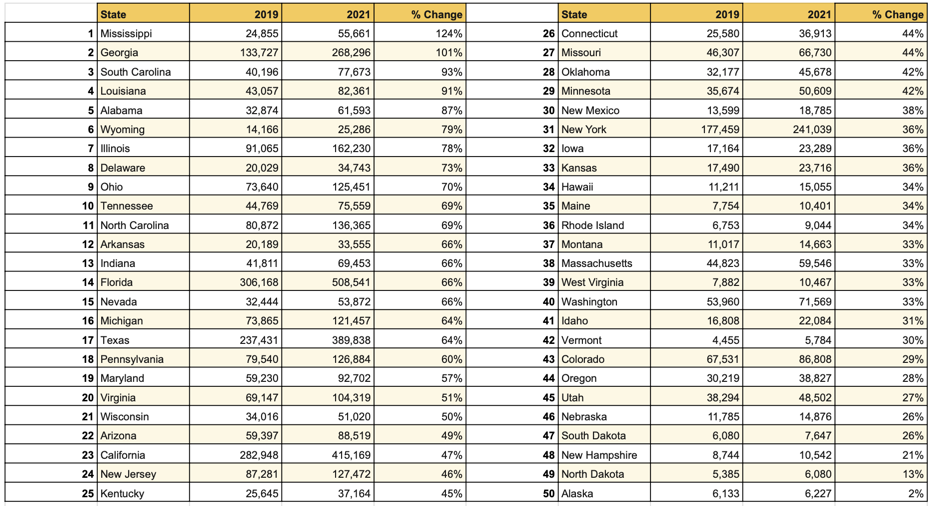While the start of the pandemic forced furloughs, layoffs, and business closures at unprecedented speed, Americans responded by starting small businesses at a record pace, according to a new report by Zapier.
Many full-time employees launched side hustles to bring in more income, and others were forced to pivot to small businesses or consultancies to support their families. Even a number of those in retirement took up entrepreneurial efforts, taking advantage of new opportunities the pandemic presented while also bringing in funds during an uncertain time.
While the pandemic created a sense of instability for full-time employees, the opportunities for entrepreneurial businesses increased phenomenally, giving those with the right mindset and access to technology the chance to succeed. In fact, 91% of business owners surveyed would recommend starting a business, showing that not only is there an appetite for small business creation, but there's also a sense of optimism for the economy.
The pandemic business boom
The data show in no uncertain terms a huge spike in new business creation at the beginning of the pandemic, and it doesn't seem to be stopping. Currently, new business creation is over 50% higher than it was pre-pandemic.
If we look closer at the details, we see that seasonal variations persist, with additional variation potentially introduced by the rise and fall of specific COVID-19 variants. During key spikes in new business creation, the overall level was at times 100% higher than what we'd seen before the pandemic.

This effect isn't uniformly distributed across the U.S. If we rank states by the percentage increase in new business creation between 2019 and 2021, the Southeast rises to the top, with Mississippi, Georgia, South Carolina, Louisiana, and Alabama leading the charge. Factors fueling the dramatic increase in southern states may include less overall disruption of businesses due to a more laissez-faire approach to pandemic-related government regulations, as well as a greater need in the region for alternative sources of income.
The pandemic appears to have created a set of circumstances that (1) increased the availability of key inputs to new business creation and (2) lowered the potential opportunity cost for starting a new business. And U.S. entrepreneurs and would-be entrepreneurs certainly took advantage of this unique window of opportunity.
Factors behind the boom
To understand how the pandemic fueled new business growth, we asked entrepreneurs why they started a business during the pandemic.

The results support our conclusion that the pandemic actually increased the availability of key business inputs needed for new business creation. Most notably, starting a new business is time-consuming, and by keeping would-be entrepreneurs at home and reducing other time commitments (such as a long commute or travel plans), the resulting time savings was redirected to entrepreneurial ventures. More than three out of four respondents said this newfound time availability was a key factor.
Likewise, for small- and medium-sized businesses that often thrive on niche markets and opportunities overlooked by larger companies, the disruption sparked by the pandemic likely caused a surge in new opportunities. For example, the number of entrepreneurs who started businesses related to providing some form of personal protective equipment (PPE) was substantial.
The fact that the majority of respondents (57 percent) also indicated that they "needed to make more money" also had an amplifying effect. Without high-paying jobs to fall back on (due to layoffs, furloughs, business closures, and other similar reductions in workforce during the pandemic), potential entrepreneurs may have concluded that their other prospects for a high salary through employment were not as good as in other non-pandemic periods.
Interestingly, the data shows that the vast majority of those starting a new business during the pandemic weren't rookie entrepreneurs. Most, in fact, had prior self-starting work experience.

This result supports the conclusion that those already well-positioned to start a business—for instance, those who previously accumulated knowledge about how to do so—were the ones who most readily took advantage of this opportunity window. Additionally, because companies, organizations, and resource groups who support new business creation may have made more resources available online in place of in-person visits, this may have created further fuel for the trend.
One important additional demographic insight: not only are experienced entrepreneurs and freelancers leading the way, but those who were already working were mostly likely to be the ones who created new business ventures. Seven out of ten new business creators were employed prior to their new venture. This lends support to the conclusion that entrepreneurs were not creating business simply because they had no other options, but rather because creating a new business was their best option.

Interestingly, the pandemic also marked the rise of a new type of new business creator: the previously retired entrepreneur. Of those over the age of 55 when starting a new business, nearly one of four were retired at the time of entrepreneurial inspiration.
The types of businesses created—and the challenges they faced

To delve deeper into the types of businesses being created, we asked respondents to comment on the nature of their business. Unsurprisingly, eCommerce comprised close to four out of 10 new businesses created—a much higher percentage than pre-pandemic periods. Entrepreneurs were innovating in ways that would not be disrupted by pandemic-related retail business closures.
The results also show a dramatic rise in professional services consulting compared to pre-pandemic levels—perhaps the type of business easiest to start from a work-from-home environment without substantial fixed and tangible costs.
Across all of these business categories, entrepreneurs face challenges that parallel three of the most pronounced pandemic economic trends: the current disruption to labor supply, the current supply chain disruption, and newfound remote communication challenges.

To overcome these challenges, entrepreneurs are solving problems in innovative and efficient ways.
Starting a business today is easier than ever before
91% of business owners recommend others start a business today
Are new pandemic-period entrepreneurs pleased with their decision to start a new business? With more than nine out of 10 respondents saying that they would recommend a similar decision to others, the answer appears to be a resounding "yes."
In addition to the increase of key inputs (such as time) and the decrease in the availability of other competing opportunities (such as a high-paying job), entrepreneurs also believe that the current business climate and available tools have made common new business tasks substantially easier than just a few years ago.

Notably, many of these reasons that it's easier than ever to start and run a business relate to the technical tools at an entrepreneur's disposal. Consider that 64 percent of small business owners say that it's easier to "automate mundane tasks" than it was just three years ago. And the top two ranking areas—creating a website and selling through social—have experienced dramatic changes in the availability and power of digital tools.
The proliferation of so-called "no-code tools"—digital tools that allow users who don't have technical coding or programming experience to still accomplish key technical tasks—have been especially impactful.
To explore the rise of no-code tools, we asked respondents about what critical business functions benefited from the use of these types of tools.

Website builders (67 percent) and email marketing tools (62 percent) topped the list, but nearly six out of 10 entrepreneurs also mentioned business automation (57 percent), showing how these tools have an even wider impact on business efficiency and effectiveness. And the use of automation is happening across all business functions.

There are enormous efficiency gains to be realized by connecting a mature and rich ecosystem of available digital tools, and automation has impacted all aspects of critical business functions, from marketing and sales to human resources and recruitment.
The future of pandemic businesses
For many new entrepreneurs, the measure of success is the business's very existence. Will our business be around one year from now? Can we find a business model that isn't just a flash in the pan? Then, once stability is achieved, the next task becomes growth. Can we grow our business venture to increase market share and rewards over time?
Nearly nine out of 10 respondents indicated that their business had achieved some staying power that would at minimum last into the next year. For seven out of 10 entrepreneurs, projected growth would likely result in the hiring of more workers in the coming year as well.

Although the vast majority of business owners are happy with their business and consider it to be successful, a surprisingly high number—more than seven out of 10—expect to return to the workforce as an employee even as they keep their business in operation on the side.

The lasting legacy of new business creation during the pandemic could therefore not only be the amplification of small business creation, but also the staying power of side hustles, where time efficiency and return on investment for every hour invested is highly valued.

For 2022, entrepreneurs are targeting priority areas that involve the expansion of their networks after a long period of social isolation (#1), the expansion of their product and service offerings (#2), and also the protection of a key limited resource—their time (#3).
That last one is especially noteworthy: solutions that help in the delivery of this time-savings and efficiency—such as tools that help automate critical business processes or mundane business tasks—can play an important role in this rising part-time and full-time new business economy.
Methodology
In order to determine the factors behind the boom in businesses during the pandemic, Zapier conducted an online survey of 2,000 business owners in the U.S. that started a business between March 2020 and October 2021. The poll was conducted by OnePoll and ran from November 1 to November 18, 2021. The responses were random, voluntary, and completely anonymous. Additional sources: Data used to create state rankings was collected from the U.S. Census Bureau.





